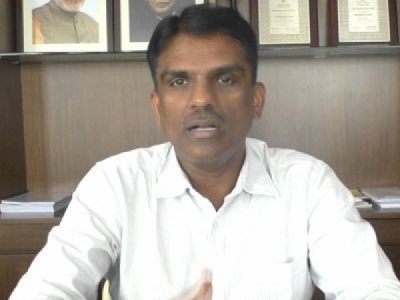
Posted on August 3, 2017
Chairman of Mormugao Port Trust (MPT) I Jeyakumar said the report prepared by the National Institute of Oceanography (NIO) on shoreline monitoring through beach profile measurements at about 44 cross sections covering both the North and South Goa beaches and baseline information on the Goa coast profile changes have revealed that there is no effect in the shoreline nor any erosion took place due to MPT’s capital dredging works.
Speaking to Herald, Jeyakumar said that “There were lots of apprehensions in the minds of the people about the erosion and effect to shoreline due to capital dredging in its limits to deepen the navigation channel by the port authorities. To assess the same in the scientific manner, MPT requested NIO to carryout shoreline monitoring study and the report received from NIO clearly revealed that there is no effect on the shoreline and there is no erosion in fact. Now as we have got the report we have decided to make it public and also to submit the report before the National Green Tribunal (NGT) shortly,” he said.
Reiterating that capital dredging is very small activity in the water area and the same will not affect the shoreline at all, Jeyakumar said, “Sea is a huge water body and all over the world capital dredging is going on. It is economic activity and environmental safer activity with no negative impact. This now has been validated by NIO report itself and I hope that everybody will understand now.” He said, “The report is yet to be made public as we wanted to present our views with proper scientific data to the people. I feel that instead of emotional feeling or to believe in hearsay, we have to bank upon on objective analysis” he told.
Meanwhile, the NIO report (copy with Herald) revealed that “Initial observations in the shoreline monitoring studies within the study area of 10 km radius from project site, conducted from July 2016 to May 2017, and the study indicated that there is no significant erosion/accretion.
However, continuous monitoring of these beach stretches is required at least for a period of another 2 years to ascertain the influence of any port activity on the beaches. From the past beach profile studies carried out by CSIR-NIO, no progressive coastal erosion is observed within 10 km radius of MPT region. The coastal erosion/accretion is related to incoming dynamic wave conditions and the littoral transport. The changes of these dynamic wave and littoral transport are due to changes in tides, ocean currents, storms, monsoons, etc. In order to find any changes in the shoreline, continuous observations have to be made for a minimum period of three years. The measured profiles are observed to be similar in the foreshore region for most of the locations. However, volumetric change analysis is to be carried out to ascertain the changes if any. This will be carried out after completion of the 12 months observations” NIO report says”.
Source: Herald





